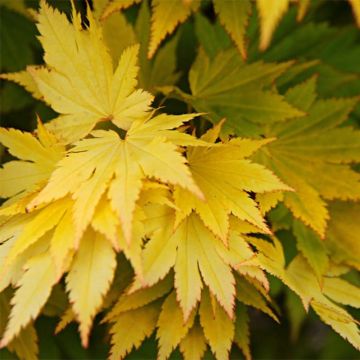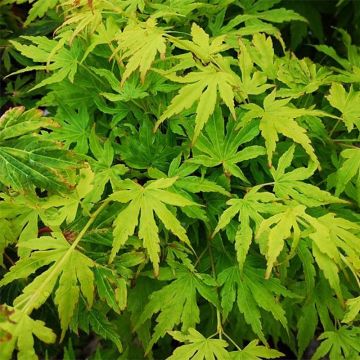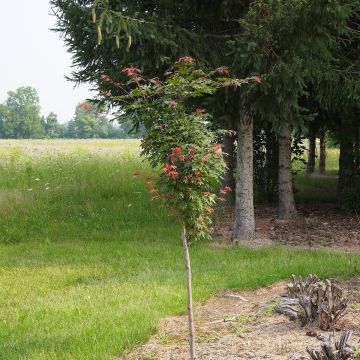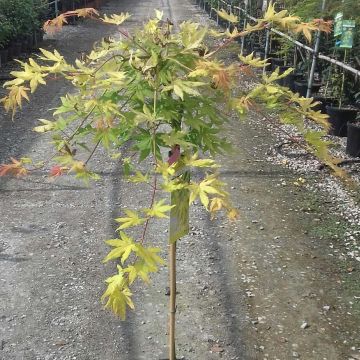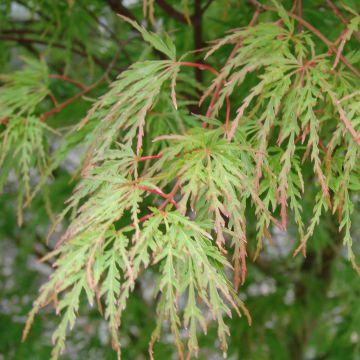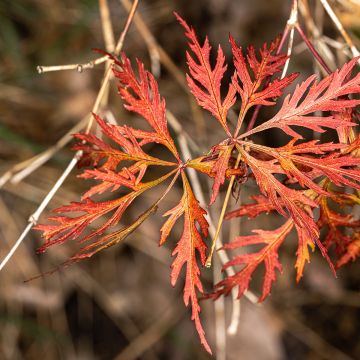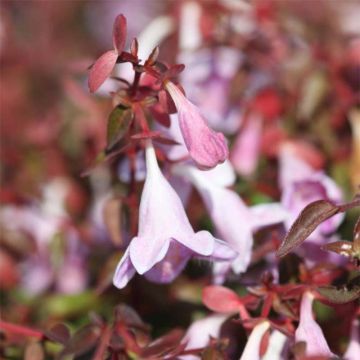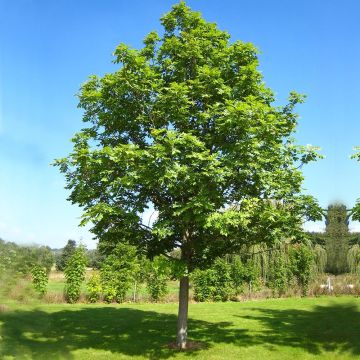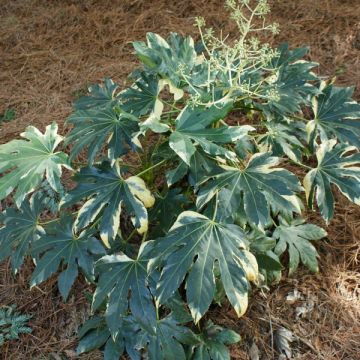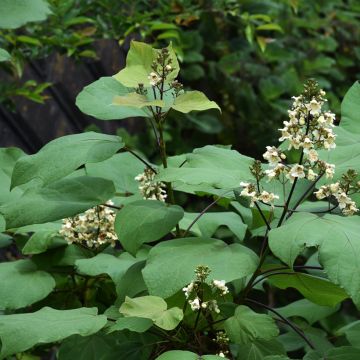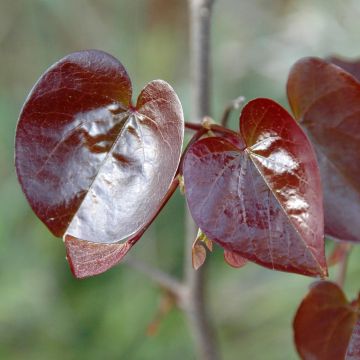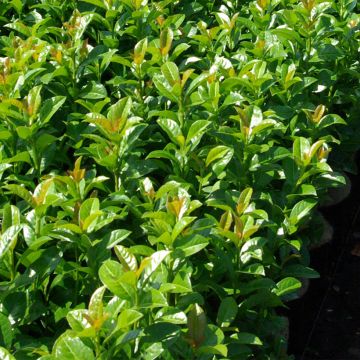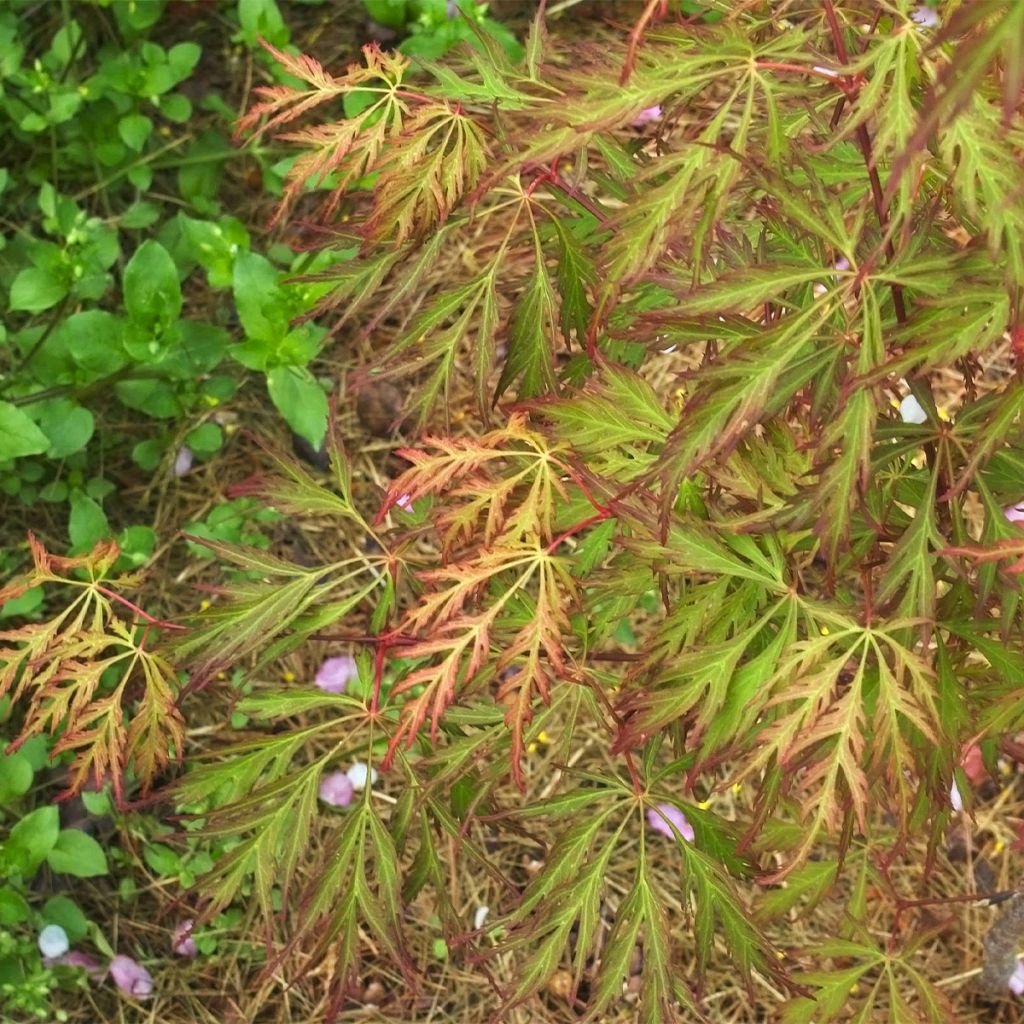

Acer pseudosieboldianum Ice Dragon - Maple
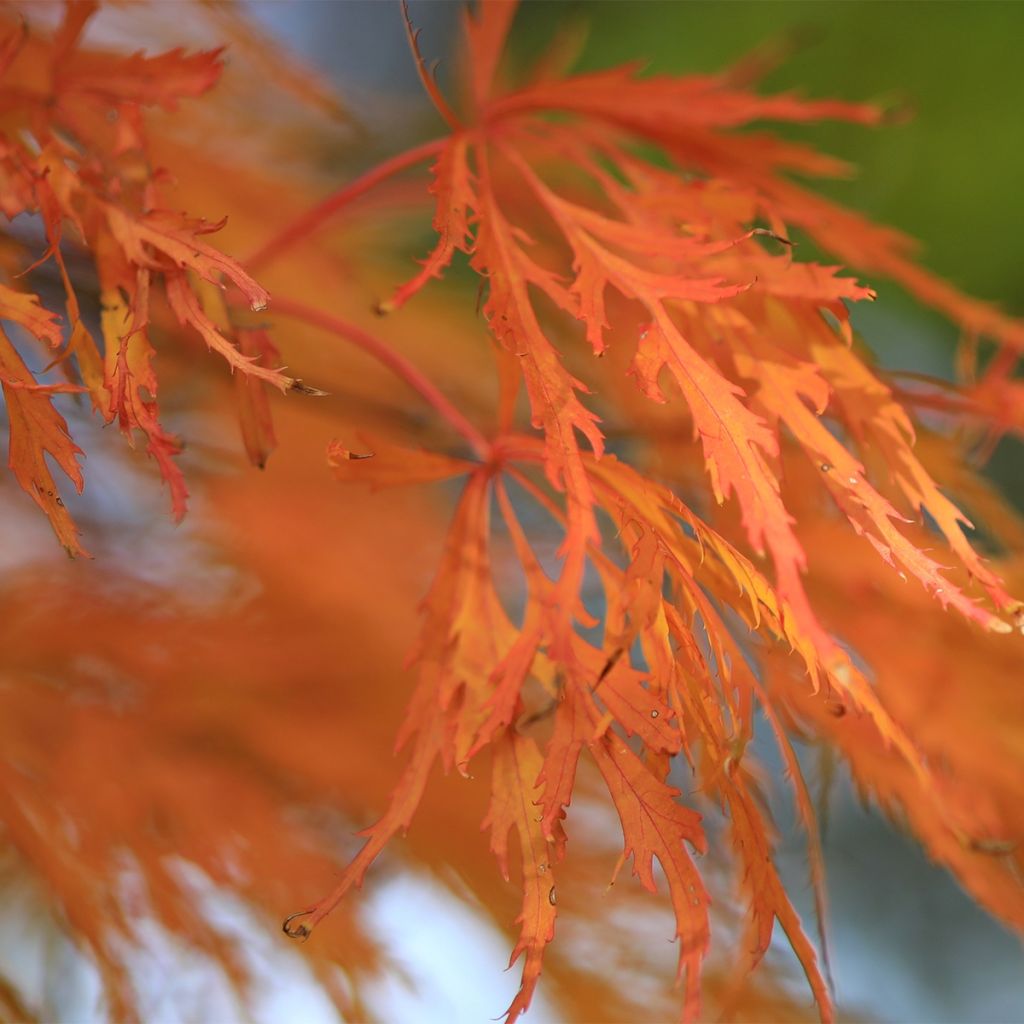

Acer pseudosieboldianum Ice Dragon - Maple
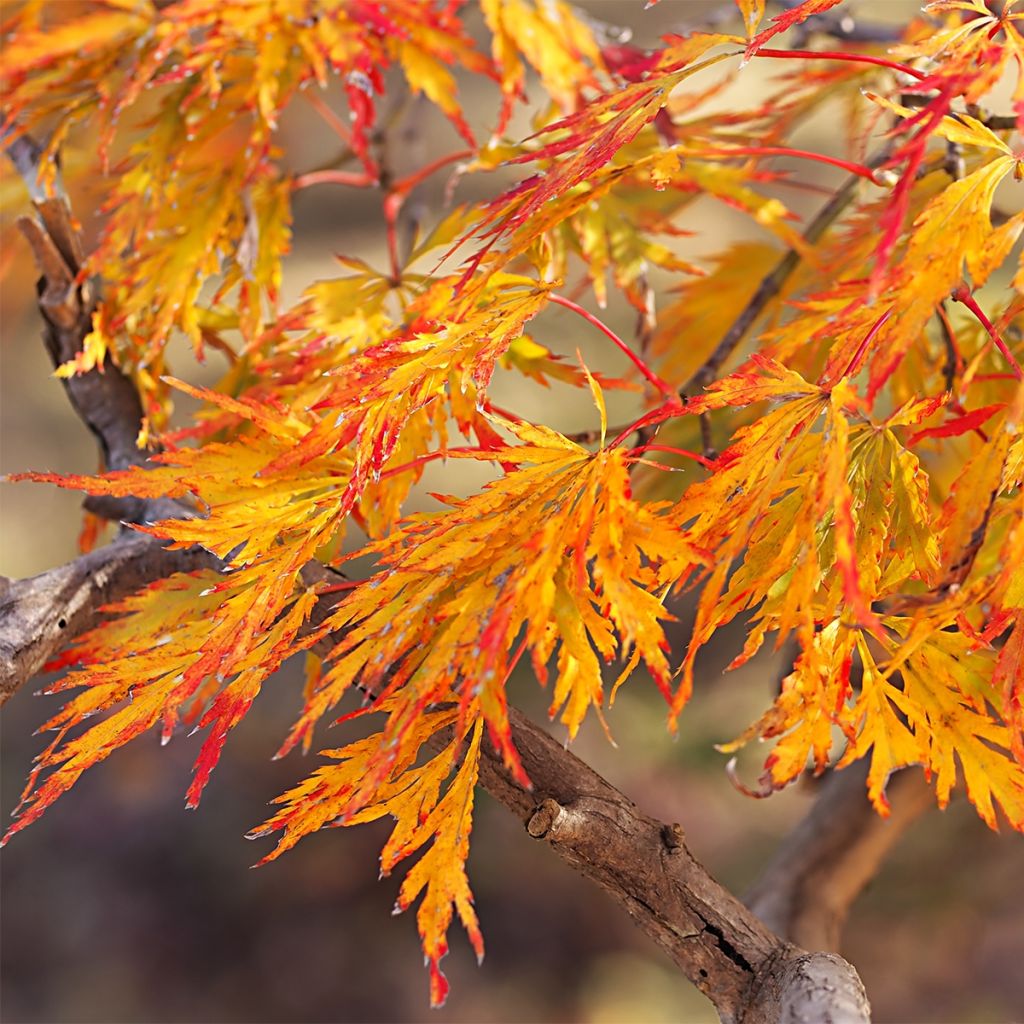

Acer pseudosieboldianum Ice Dragon - Maple
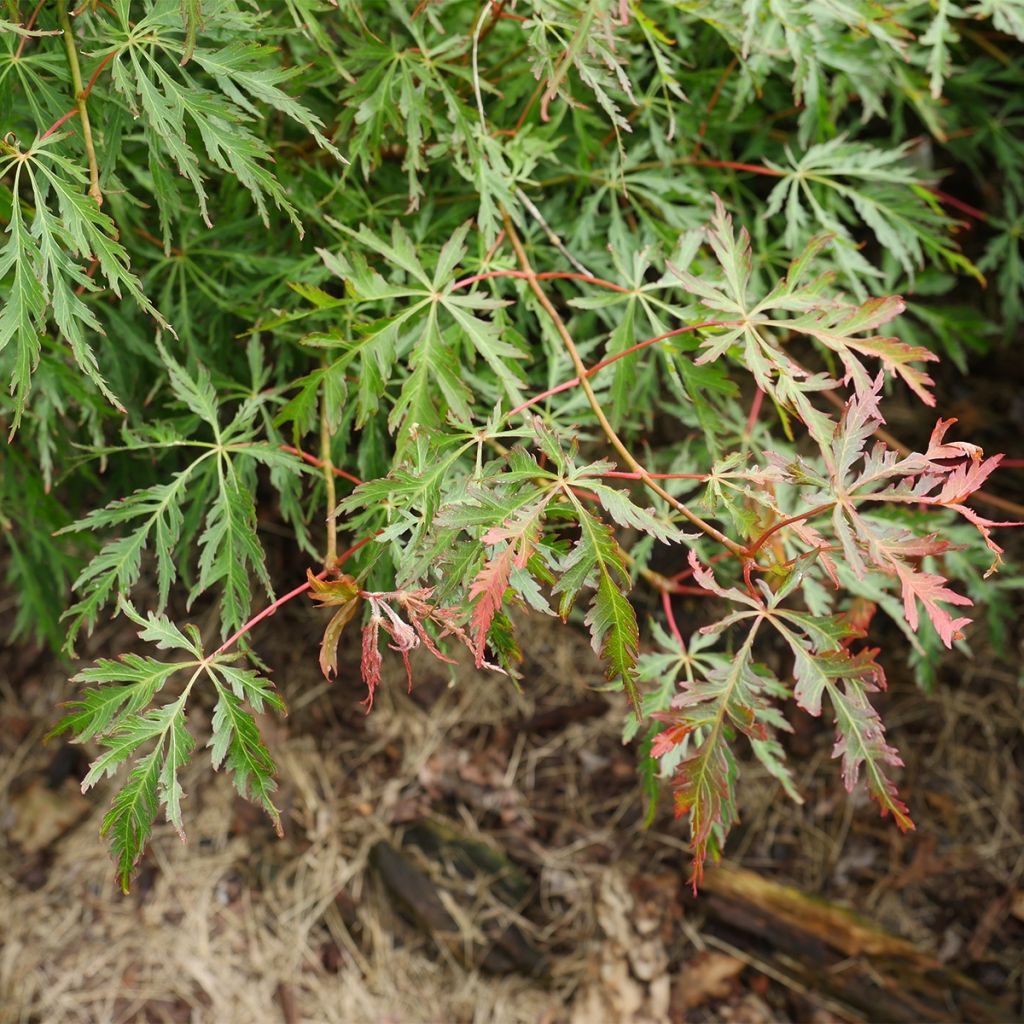

Acer pseudosieboldianum Ice Dragon - Maple
Acer pseudosieboldianum Ice Dragon - Maple
Acer x pseudosieboldianum Ice Dragon ‘IslID’
Japanese Maple, Smooth Japanese Maple
This item cannot be shipped to the selected country
Delivery charge from €5.90
Delivery to Corse prohibited
More information
Schedule delivery date,
and select date in basket
This plant carries a 24 months recovery warranty
More information
We guarantee the quality of our plants for a full growing cycle, and will replace at our expense any plant that fails to recover under normal climatic and planting conditions.
From €5.90 for pickup delivery and €6.90 for home delivery
Express home delivery from €8.90.
Delivery to Corse prohibited: UE law prohibits the import of this plant from mainland France to Corse as part of the fight against Xylella fastidiosa. Please accept our sincere apologies.
More information
Does this plant fit my garden?
Set up your Plantfit profile →
Description
Acer x pseudosieboldianum 'Ice Dragon' is a new hybrid variety, still rare in cultivation, that combines the charm and refinement of the Japanese maple with the extreme hardiness of its other parent, the Korean maple, which is much less well known. This tree displays a unique habit, with slightly trailing cascading branches, and is adorned with laciniate foliage in changing colours that can rival that of its Japanese cousin. It is interesting all year round, even after the leaves have fallen, revealing the sinuous and undulating structure of its branches. The difference can be appreciated in the garden: completely unaffected by the rigours of winter, this variety is less demanding in terms of soil type, as long as it is well-drained, and it will also tolerate sun and heat better. To fully enjoy the spectacle of its metamorphosis, plant it near the house or in a large container on a terrace. It is superb as a standalone specimen in a small garden, with a Japanese-inspired style of course, but also in a Zen, exotic, or contemporary setting.
Like all maples, 'Ice Dragon' ('IslID') belongs to the Sapindaceae family (formerly Aceraceae). It is part of a series of hybrids called Jack Frost® developed at the Iseli nursery in Oregon (USA). All the maples resulting from this selection program are the result of crosses between Acer palmatum, the Japanese maple, which is sometimes a bit delicate to grow, and A. pseudosieboldianum, which is particularly resistant and native to North Korea, Manchuria, and China, and hardy down to -30°C (-22°F).
'Ice Dragon' is the smallest representative of this series, but also the one that best expresses the spirit of the Japanese maple. It is a compact, moderately fast-growing, bushy tree with slightly trailing branches, wider than it is tall. At maturity, it will reach approximately 2.4m (8ft) in height and 3m (10ft) in spread. Its slightly arched branches bear deciduous leaves, which fall in autumn and reappear in spring. These are large leaves, finely divided into numerous narrow lobes. In spring, the young leaves are tinted pale red and orange, then quickly turn green. In late summer, the foliage takes on different shades of yellow, orange, and red.
'Ice Dragon' grows best in preferably slightly acidic to neutral soil, that is also well-drained, in a sunny or partially shaded location. Compact yet sculptural, it is well-suited to small gardens, as well as for ornamenting terraces and patios. Chinese azaleas, pieris, wild camellias, and non-spreading Fargesia bamboos will be its most beautiful companions. Mix several varieties of Japanese maples to vary the colours and leaf structures; the effect is always stunning at the end of the season. Its foliage deserves to be accompanied by shades of purple that beautifully enhance it from spring to autumn: choose, for example, physocarpus, dark berberis, Cotinus 'Royal Purple', or a purple Red Majestic hazel to showcase it.
Report an error about the product description
Acer pseudosieboldianum Ice Dragon - Maple in pictures
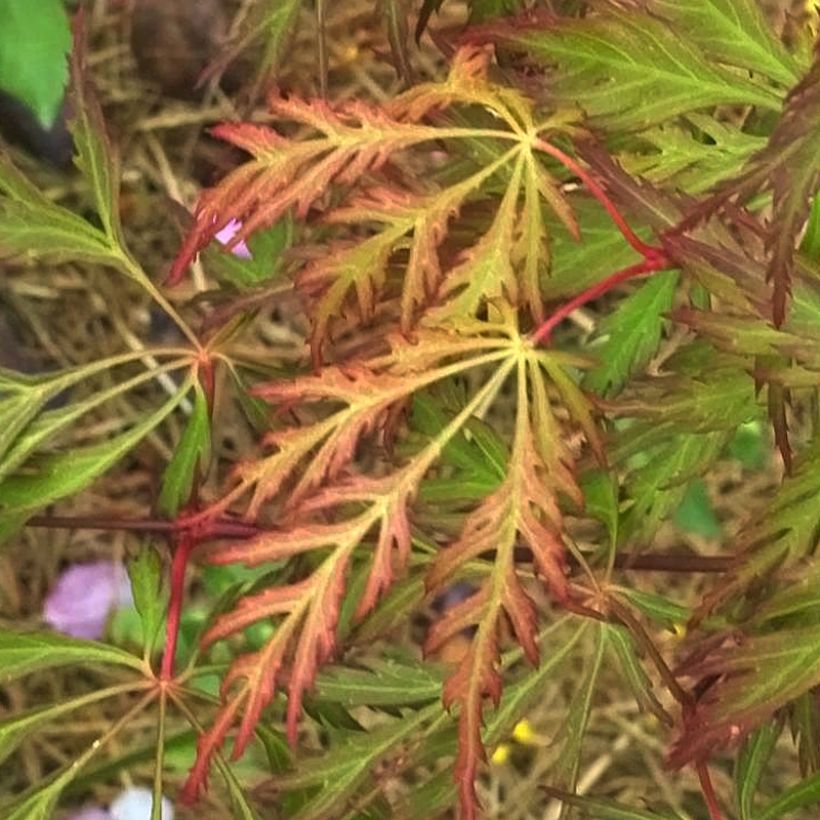

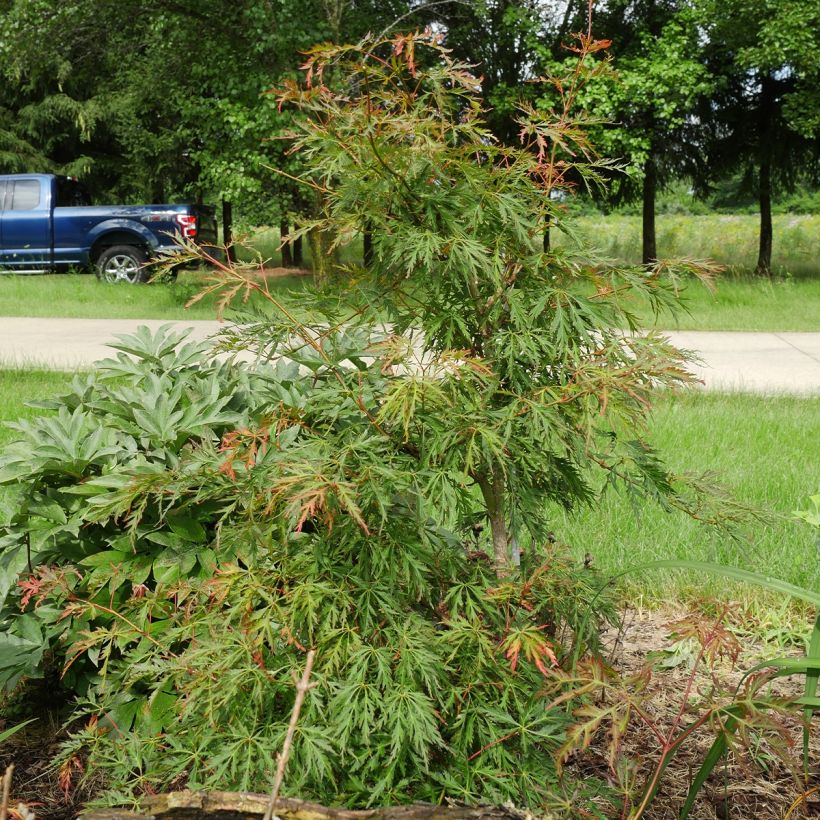

Plant habit
Flowering
Foliage
Botanical data
Acer
x pseudosieboldianum
Ice Dragon ‘IslID’
Aceraceae
Japanese Maple, Smooth Japanese Maple
Cultivar or hybrid
Other Japanese Maples
Planting and care
Plant in spring or autumn in preferably neutral to slightly acidic, light, deep, loose, and well-drained soil, in a sunny or semi-shaded position. A mixture of compost, light gravel or non-calcareous coarse sand, garden soil, and ericaceous soil is suitable. This variety does not tolerate heat or drought. The soil should be kept moist by mulching in summer, if necessary, but should never be waterlogged in winter. In summer, regular watering is necessary in dry weather, but space each watering out. Apply a significant amount of organic matter every 3 years to ensure a good humus content in the soil. Winter pruning is limited to balancing the branches. Treat preventively against scale insects and Verticillium, a fungal disease that occurs in heavy and overly moist soil.
Planting period
Intended location
Care
-
, onOrder confirmed
Reply from on Promesse de fleurs
Striking foliage shrubs
Haven't found what you were looking for?
Hardiness is the lowest winter temperature a plant can endure without suffering serious damage or even dying. However, hardiness is affected by location (a sheltered area, such as a patio), protection (winter cover) and soil type (hardiness is improved by well-drained soil).

Photo Sharing Terms & Conditions
In order to encourage gardeners to interact and share their experiences, Promesse de fleurs offers various media enabling content to be uploaded onto its Site - in particular via the ‘Photo sharing’ module.
The User agrees to refrain from:
- Posting any content that is illegal, prejudicial, insulting, racist, inciteful to hatred, revisionist, contrary to public decency, that infringes on privacy or on the privacy rights of third parties, in particular the publicity rights of persons and goods, intellectual property rights, or the right to privacy.
- Submitting content on behalf of a third party;
- Impersonate the identity of a third party and/or publish any personal information about a third party;
In general, the User undertakes to refrain from any unethical behaviour.
All Content (in particular text, comments, files, images, photos, videos, creative works, etc.), which may be subject to property or intellectual property rights, image or other private rights, shall remain the property of the User, subject to the limited rights granted by the terms of the licence granted by Promesse de fleurs as stated below. Users are at liberty to publish or not to publish such Content on the Site, notably via the ‘Photo Sharing’ facility, and accept that this Content shall be made public and freely accessible, notably on the Internet.
Users further acknowledge, undertake to have ,and guarantee that they hold all necessary rights and permissions to publish such material on the Site, in particular with regard to the legislation in force pertaining to any privacy, property, intellectual property, image, or contractual rights, or rights of any other nature. By publishing such Content on the Site, Users acknowledge accepting full liability as publishers of the Content within the meaning of the law, and grant Promesse de fleurs, free of charge, an inclusive, worldwide licence for the said Content for the entire duration of its publication, including all reproduction, representation, up/downloading, displaying, performing, transmission, and storage rights.
Users also grant permission for their name to be linked to the Content and accept that this link may not always be made available.
By engaging in posting material, Users consent to their Content becoming automatically accessible on the Internet, in particular on other sites and/or blogs and/or web pages of the Promesse de fleurs site, including in particular social pages and the Promesse de fleurs catalogue.
Users may secure the removal of entrusted content free of charge by issuing a simple request via our contact form.
The flowering period indicated on our website applies to countries and regions located in USDA zone 8 (France, the United Kingdom, Ireland, the Netherlands, etc.)
It will vary according to where you live:
- In zones 9 to 10 (Italy, Spain, Greece, etc.), flowering will occur about 2 to 4 weeks earlier.
- In zones 6 to 7 (Germany, Poland, Slovenia, and lower mountainous regions), flowering will be delayed by 2 to 3 weeks.
- In zone 5 (Central Europe, Scandinavia), blooming will be delayed by 3 to 5 weeks.
In temperate climates, pruning of spring-flowering shrubs (forsythia, spireas, etc.) should be done just after flowering.
Pruning of summer-flowering shrubs (Indian Lilac, Perovskia, etc.) can be done in winter or spring.
In cold regions as well as with frost-sensitive plants, avoid pruning too early when severe frosts may still occur.
The planting period indicated on our website applies to countries and regions located in USDA zone 8 (France, United Kingdom, Ireland, Netherlands).
It will vary according to where you live:
- In Mediterranean zones (Marseille, Madrid, Milan, etc.), autumn and winter are the best planting periods.
- In continental zones (Strasbourg, Munich, Vienna, etc.), delay planting by 2 to 3 weeks in spring and bring it forward by 2 to 4 weeks in autumn.
- In mountainous regions (the Alps, Pyrenees, Carpathians, etc.), it is best to plant in late spring (May-June) or late summer (August-September).
The harvesting period indicated on our website applies to countries and regions in USDA zone 8 (France, England, Ireland, the Netherlands).
In colder areas (Scandinavia, Poland, Austria...) fruit and vegetable harvests are likely to be delayed by 3-4 weeks.
In warmer areas (Italy, Spain, Greece, etc.), harvesting will probably take place earlier, depending on weather conditions.
The sowing periods indicated on our website apply to countries and regions within USDA Zone 8 (France, UK, Ireland, Netherlands).
In colder areas (Scandinavia, Poland, Austria...), delay any outdoor sowing by 3-4 weeks, or sow under glass.
In warmer climes (Italy, Spain, Greece, etc.), bring outdoor sowing forward by a few weeks.

































